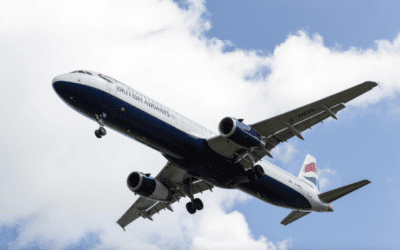
A client who loves searching online came to me with a fare she had found on Air Berlin to Europe. She liked the sound of the airline name and the fare was good.
There were a couple issues — no frequent flier miles (no, not EVERY airline in the planet has joined up with American, Delta or United), and an exceptionally meager seat pitch.
On Air Berlin, which uses LTU equipment the seat pitch is 30 inches. That’s the total distance between seats. And the seats are 17 inches wide.
To put that in perspective, Southwest has an average pitch of 32 inches. Even United Airlines, where non-economy plus seats are pretty crammed, averages 31 inches in regular coach.
Lufthansa, Air Berlin’s German competition, has most economy seat pitch set at 32 inches apart, and their seats are 17.5 inches wide.
In fact, industry average for international flights is generally 31-32 inches of pitch between seats. Fliers know that’s hardly spacious.
Think an inch or two doesn’t matter? After 10 plus hours on a flight even half an inch matters. This is especially true on overnight flights when the passenger in front of you is almost guaranteed to recline the seat to improve their own limited amount of room.
How do you find out if your airline or plane has these shoehorned-in seats?
It’s not always the discount carriers that have the least room. (Southwest as noted above, has more room than legacy carriers, as does jetBlue)
Travel agents have access to seat information and there are are sites like my favorite seatguru.com that list seat pitch and width by airline and type of aircraft. As many frequent fliers have learned, these numbers can vary even within the same airline depending on the equipment used on a given route.
Most airlines also have exit row and bulkhead seating with extra legroom. But, these days, most of them reserve this seating for their most frequent fliers or they sell the seats for an additional charge in advance.
Recently, however, I have had clients who would have been happy to pay Singapore Airlines’ $50 exit-row charge and United’s “Economy Plus” charge, but all those seats were already taken. (United in particular can run out of Economy Plus seats weeks in advance, even for their elite flies.)
But whether extra legroom is not an option because of cost or availability, it still means that travelers then just have the option of searching for the least awful option as far as economy seat pitch.
(And while frequent flier mileage may factor into this decision, most carriers have enough partners that there are often a couple choices on any given route, besides the different planes that a single airline may operate.)
If it seems like it’s not worth checking into an extra inch or two, then you probably haven’t been on a full transatlantic flight in coach lately.
Photo: aerospaceweb.org
Janice Hough is a California-based travel agent a travel blogger and a part-time comedy writer. A frequent flier herself, she’s been doing battle with airlines, hotels, and other travel companies for over three decades. Besides writing for Travelers United, Janice has a humor blog at Leftcoastsportsbabe.com (Warning, the political and sports humor therein does not represent the views of anyone but herself.)



